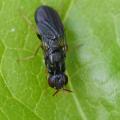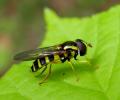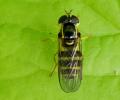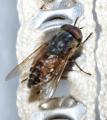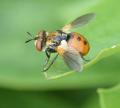Who is here? 1 guest(s)
|
Cheilosia soror m
|
|
| dipdip |
Posted on 09-08-2009 20:06
|
|
Member Location: Posts: 356 Joined: 17.12.05 |
Hello yellow = humerus => blue = anterior anepisternum with its posterodorsal rim (bigger points) with hairs Is that right? Trying hard to learn ... Maja |
|
|
|
| Andre |
Posted on 09-08-2009 21:00
|
|
Member Location: Posts: 2111 Joined: 18.07.04 |
Antennae reddish? Facial knob broad? |
|
|
|
| dipdip |
Posted on 10-08-2009 08:49
|
|
Member Location: Posts: 356 Joined: 17.12.05 |
Oh yes and arista hairy and coarse punctation on thorax - it has to be soror. But I wanted to make sure that I lock at the right place locking for the anterior anepisternum. it is the blue part, isn't it? |
|
|
|
| Andre |
Posted on 10-08-2009 09:43
|
|
Member Location: Posts: 2111 Joined: 18.07.04 |
Indeed it is the blue part, the flat triangular area in between the 'bulbs'.. |
|
|
|
| dipdip |
Posted on 10-08-2009 10:01
|
|
Member Location: Posts: 356 Joined: 17.12.05 |
Thank you very much André for helping! Greetings Maja |
|
|
|
| Stephane Lebrun |
Posted on 13-08-2009 12:42
|
|
Member Location: Posts: 8248 Joined: 03.03.07 |
The blue area is not the anepisternum, but the notopleuron, and the humerus is the embossed part just in front of it (red mark on my schema). Anterior anepisternum is the area just behind the anterior spiracle (in green ) ; posterior anepisternum in yellow-green.
Stephane. |
|
|
|
| jorgemotalmeida |
Posted on 13-08-2009 13:20
|
|
Member Location: Posts: 9295 Joined: 05.06.06 |
the humeral callus or humeral calli (PLURAL) is the same thing as postpronotum and it is in red in Stéphane's scheme. The postpronotum or humerus or humeral callus... is located adjacent to the anterior spiracle. To me I consider only one anepisternum...  In the posterior part of the anepisternum you can see that there is a very nice row of 4 strong bristles in this photo (a Miltogramminae fly) 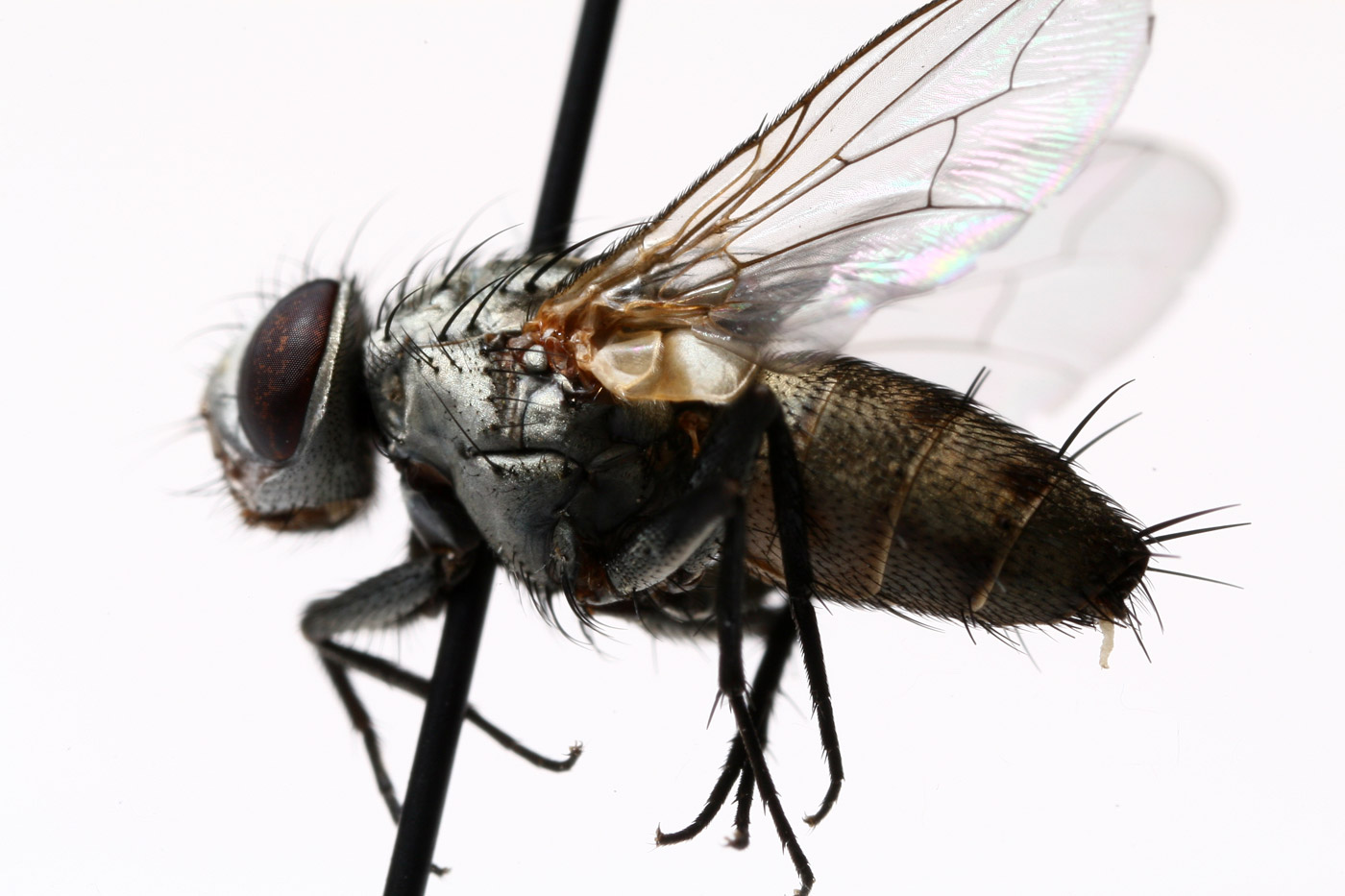
Edited by jorgemotalmeida on 13-08-2009 13:28 |
|
|
|
| dipdip |
Posted on 14-08-2009 22:12
|
|
Member Location: Posts: 356 Joined: 17.12.05 |
M.P. van Veen in his book about Hoverflies of NW Europe, p. 58 writes about Cheilosia soror: "... anterior anepisternum with hairs along posterodorsal rim..." and about Cheilosia scutellata: "... anterior anepisternum without hairs along posterodorsal rim..." 1. just one anepisternum as jorge points it In the posterodorsal part of it you can see a rim like a very ridge in the landscape and on it a jungle of hairs. So everything cristalclear? No, because this counts for both species. 2. anterior anepisternum, green in Stéphanes reply This part is bare of (strong) hairs for scutellata. Soror has some hairs there. Thank you very much for your carefull and appreciated replays. Greetings Maja Edited by dipdip on 14-08-2009 22:13 |
|
|
|
| Andre |
Posted on 17-08-2009 18:20
|
|
Member Location: Posts: 2111 Joined: 18.07.04 |
That purple triangle is exactly what I was referring to. Very good  |
|
|
|
| sanderbot |
Posted on 24-08-2009 11:05
|
|
Member Location: Posts: 24 Joined: 22.08.09 |
I do not have problems locating the anterior anepisternum, however, I do have problems identifying soror and scutellatum. Last weeks I caught different flies in southern Germany who where either soror or scutellatum: eyes bare, partly pale legs, arista haired, broad facial knob, females with partly yellow scutellum. Some of them had antenna with a very bright orange 3rd segment, which thus should be soror. However, some were more intermediate, and had orange brown or brown antennae. According to van Veen (2004) I should check whether the thoracic dorsum has fine or coarse punctuation and whether the anterior anepisternum has hairs along posterodorsal rim. Both characters give me problems: - How to assess whether the thoracic dorsum has fine or coarse punctuation? I often find the punctuation differing even within an individual, with for instance more fine punctuation near the margins. - What does ‘hairs along posterodorsal rim’ exactly mean? Should the hairs be on a margin of the anterior anepisternum or on the anterior anepisternum itself? Greetings, Sander |
|
|
|
| Andre |
Posted on 24-08-2009 21:34
|
|
Member Location: Posts: 2111 Joined: 18.07.04 |
Sander wrote: - What does ‘hairs along posterodorsal rim’ exactly mean? Should the hairs be on a margin of the anterior anepisternum or on the anterior anepisternum itself? @ Sander: on the surface itself. But mainly in the upper corner, near the 'bulby' and haired surrounding. Take care of good light, turn and twist to check the surface. For me, in this case, it works best if I look at the an.ep from above and turned just a little sideways. You will get the hand of it sooner or later. Sounds like you caught both species... Good luck! |
|
|
|
| sanderbot |
Posted on 26-08-2009 08:32
|
|
Member Location: Posts: 24 Joined: 22.08.09 |
Thank you Andre. I spent another afternoon on the flies, and I think I got the trick. When separating the individuals only on the an.ep character, the identifications corresponded nicely with the colour of the 3rd segment of the antennae: all the sorors had bright orange ones and the scutellata individuals had either brown black or sometimes more orange brown antennae. I still don't get the punctuation thing, there seems to be a lot of within species variation. But that's not too important anymore because I got the IDs anyway. greetings, Sander |
|
|
|
| Andre |
Posted on 26-08-2009 10:21
|
|
Member Location: Posts: 2111 Joined: 18.07.04 |
Very good, Sander. By the way: are we going to see you on the next Diptera weekend of the Sectie Diptera?  |
|
|
|
| Jump to Forum: |


